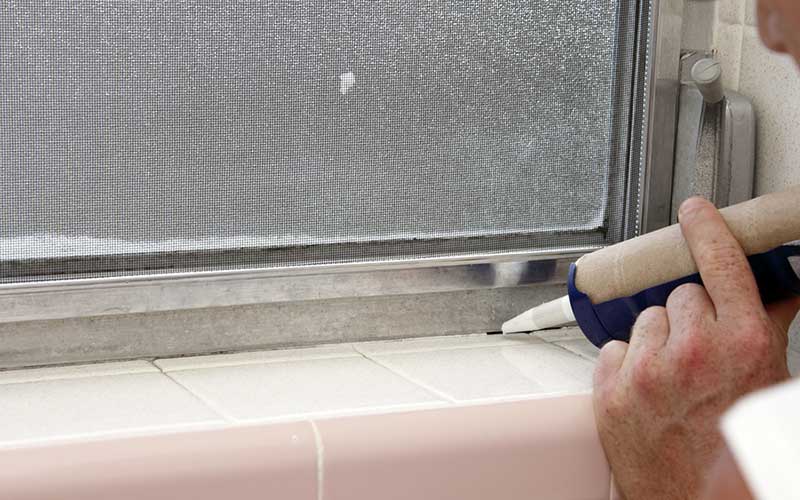
Keeping heating costs down during the colder seasons is a priority for most every New England homeowner. About 30 percent of the home’s heat escapes through small cracks and holes around windows and underneath doors. This can lead to a 50-75 percent increase in your fuel bills. If this statistic hits a little close to home, winterizing windows and doors is the solution. Here are five preventative steps you can take to winterize your windows and doors before the temperatures start to dramatically drop.
Learn how to prepare your entire home for winter.
Identify Air Leaks
Before you can fix a problem, you must identify it. Take a good look at your windows for easy-to-spot problems that may have crept up over the last few years. Cracked glass, rotting wood and obvious air or water leakage are common culprits in heat loss.
To identify air leaks hold a flashlight, lit candle or incense stick by the edges of the window frame and move along walls. Where the light escapes or the smoke wavers, you have air sneaking in, and out.
For peace of mind, call a professional to address any serious issues.
For doors: Locate leaks as above. Give your attention to places where two different building materials meet, like corners and around chimneys. Check your door’s alignment and if it’s not hanging straight, adjust the hinges and strike plate.
Initiate Fall Cleaning
Include winterization in your fall cleaning regimen. Remove window screens and clean the tracks thoroughly, removing old caulk and loose paint or dirt. Consider installing storm windows for a long-lasting fix.
Correct Air Leaks
If you leave gaps and cracks around windows or doors unfilled, you may as well leave your windows open. The money you spend on caulking and weather stripping materials can be recovered in one heating season, or less. Apply new caulk to dry, cleaned frame leaks. Use a wood filler for wide joints or larger cracks as needed before you caulk.
For doors: Apply caulk or wood filler, as above, and add weather stripping to fill the gap between the bottom of the door and the ground. Don’t forget about your garage door, too. You can adhere foam panels to the backside of garage door with double-sided tape for extra protection against the cold.
Insulate Windows
Hanging the right curtains can work wonders to insulate against drafty frames. You can purchase drapes that are designed specifically for insulation – they are meant to absorb heat from the sun. Dual-purposed window shades are reflective on one side and heat absorbing on the others. Dark curtains, or even your favorite blanket, will work better than ordinary decorative curtains to keep the heat in.
Hang curtains as close to the window as possible, keeping them closed on windows that don’t get much sun during the day. You can even layer two drapes on top of each other.
Install Storm Windows
Windows account for 10 to 25 percent of our heating bills because of leaked air. Sometimes, the best solution available is installing new, energy-efficient storm windows. Doing so can reduce heat loss by 25 to 50 percent. Storm windows are available for most windows and come in a variety of styles. Check with your local utility company about incentives for low-e storm windows (thermal windows with energy efficient glazing). Visit energy.gov/savings to learn about available tax credits, rebates and savings.
For best results, have storm windows professionally installed according to manufacturer’s instructions to preserve your warranty.
For doors: Installing a storm door can increase energy efficiency by 45 percent. Aside from reducing air flow via leaks, storm doors allow light to penetrate your home, causing an additional warming effect. Also consider replacing worn thresholds and adding a sweep to the bottom.
If you’re looking for new or replacement windows, storm windows or storm doors, learn more about Morrison Building and Remodeling and our products available for New England homeowners. Our goal is to keep you safe, warm and protected in all weather.
Now that you know how to winterize windows and doors, you can keep your home – and your heating bill – in good spirits all season long.
